In 2005, Congress instituted a new renewable-fuel standard. In response, refiners removed methyl tertiary butyl ether (MTBE) from gas and started blending fuel with ethanol. Ethanol helps reduce petroleum use and greenhouse-gas emissions. Derived from corn, it supports U.S. agriculture and promotes energy independence. Ethanol, however, can be bad for small engines.
These problems center on the two following issues:
1) Ethanol can dissolve plastic and create deposits
Ethanol is an excellent solvent and drying agent that dissolves old gum and varnish deposits from the gas tank and fuel lines.
However, ethanol can also dissolve plastic and create deposits, like those seen in the carburetor bowl shown here.
Honda states that the dissolved material can clog filters or pass through and leave deposits on fuel injectors, fuel pumps, fuel-pressure regulators, carburetor jets, intake tracts, valves and valve guides.
The result can be a lawnmower, snowblower, chainsaw or other equipment that won’t start or runs poorly.
Small-engine manufacturer ECHO agrees, stating in its warranty that these deposits can lead to poor engine performance; loss of power; overheating; fuel-vapor lock; improper clutch engagement caused by increased engine idle speeds, which allows cutting attachments to turn while the unit is idling; and premature deterioration of fuel lines, gaskets, carburetors and other engine components.
2) Ethanol and water don’t mix
Small-engine manufacturers have spent considerable time studying the relationship between ethanol and water.
ECHO warns that ethanol will absorb a small amount of moisture and stay in suspension within the gasoline for a while.
However, the ethanol will only absorb up to three-quarters of an ounce of water in a gallon of gas before it reaches its saturation point. Once the ethanol has absorbed enough moisture to reach its saturation point, phase separation occurs.
Phase separation means the ethanol and absorbed water drop to the bottom of the fuel container since it is heavier than the gas and oil, leaving the gasoline and oil mix to float on top of the tank.
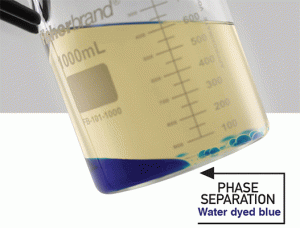
Most operators never notice water in the can when they refuel their equipment. The end result is often a carburetor ruined with rust and corrosion. These repairs can be costly and are not typically covered by warranty.
Stihl stresses that the layer of gasoline left floating on top has a lower octane level than the original ethanol-gasoline blend, which can result in unstable engine operation, power loss and major engine failures.
Ethanol’s affinity for water explains why so many ethanol-related problems surface in the marine industry.
In fact, some marina personnel say up to 65 percent of their service orders are attributable to fuel-system problems.
Combating ethanol problems
Although some fuel additives on the market claim to reverse the effects of phase separation, there’s no way to reintegrate gasoline and ethanol once they’ve separated. Instead, it’s best to prevent it.
One solution is to use non-oxygenated, ethanol-free gas in your small engines. It costs a little more, but it eliminates problems associated with ethanol.
Another solution is to treat every tank of fuel and container of gas with AMSOIL Quickshot. It helps keep water molecules dispersed in the fuel to prevent phase separation. It also cleans varnish, gums and insoluble debris while stabilizing fuel during short-term storage.
Quickshot was tested in fuel containing 10 percent ethanol. Controlled plugging of injectors showed a 70 percent flow improvement, while oxidation stability improved 44 percent over untreated fuel. It addresses ethanol-related problems and helps keep your small engines running strong.
Regardless whether you’re pro- or anti-ethanol, we can all agree on the importance of taking care of our small engines.
Updated. Originally published: July 12, 2017
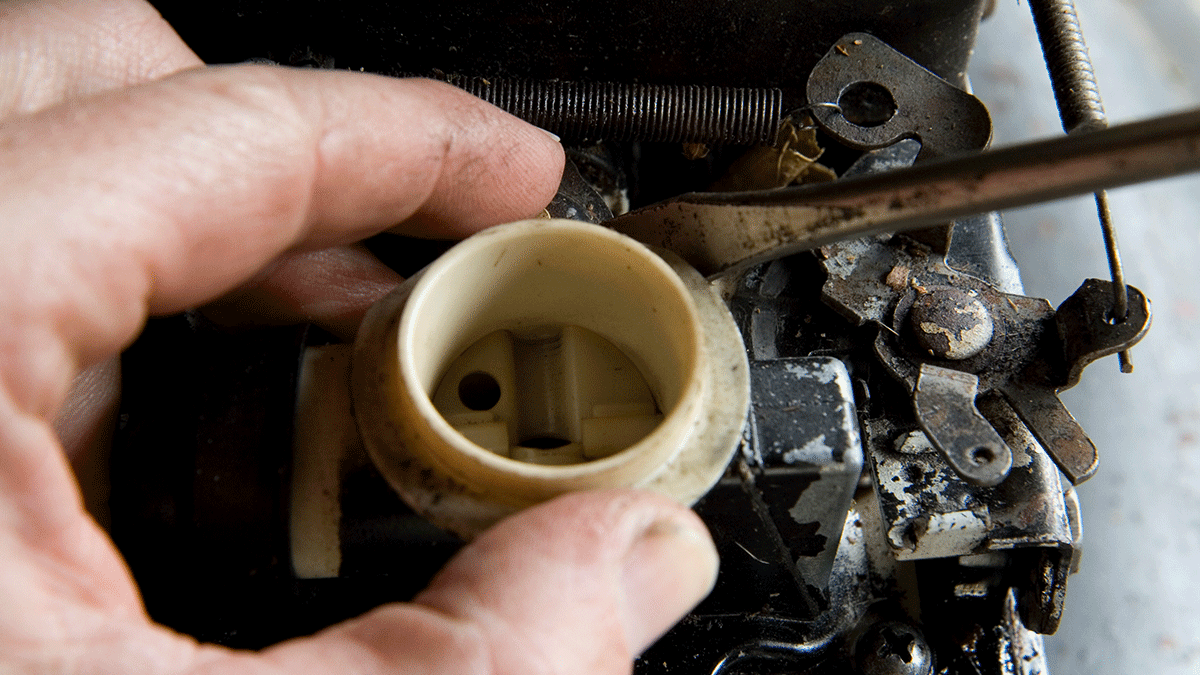
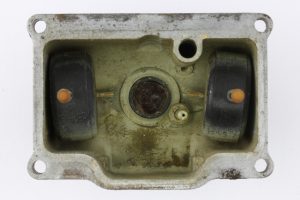

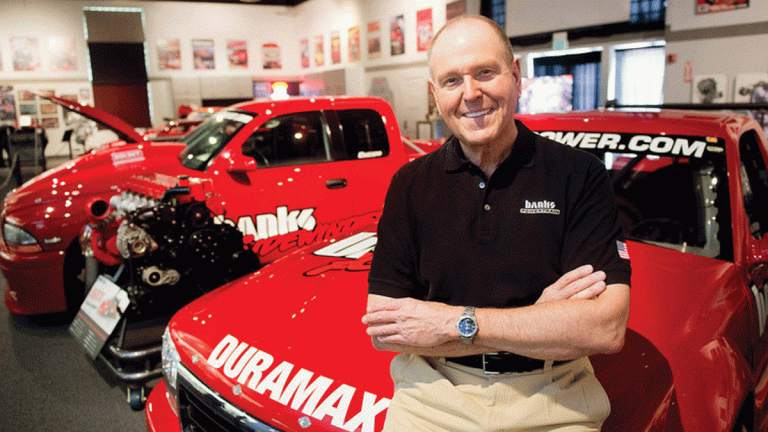
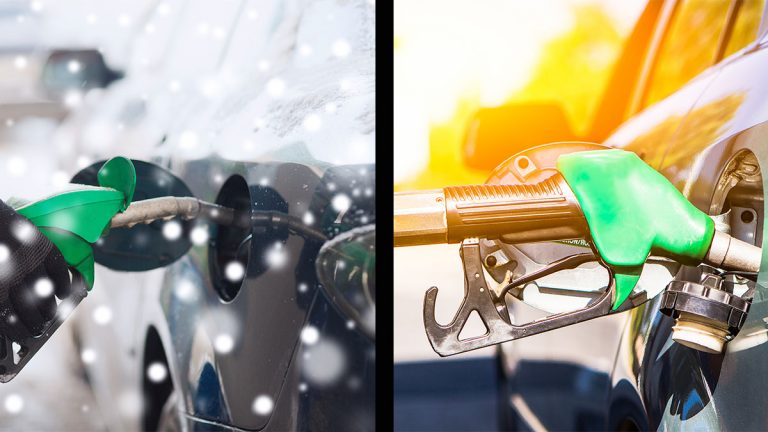


Can you enumerate the pros and cons?
Thank you very much for the request Christian,
The merits of ethanol stem from its environmental benefits as an oxygenate Vs alternatives like MTBE, its solvent properties are excellent, as well as its ability to displace water. However, these same properties can also create issues related issues related to deposits and corrosion. Lastly, ethanol has 28% less energy density than gasoline.
Ethanol does not burn dirty; it does not create carbon deposits or gumming or gunk or varnishing; and it is less corrosive than gasoline and aromatics.
The comparison of energy density between ethanol and gasoline is irrelevant. See: The Irrelevance Of BTU Rating – Big Oil’s Gimmick To Hoodwink The Public
http://www.theautochannel.com/news/2015/10/19/144405-irrelevance-btu-rating.html
In any event, where do you get the 28% figure from? You must know that ethanol has 32% less energy than gasoline (gasoline has a BTU rating of 116,000 and ethanol has a BTU rating of 78,000. However, if you’re comparing E0 to E10 the BTU difference is only 3.3%. The difference between E0 and E15 is only about 4%. The difference between E0 and E85 is about 28%,but if this is where you derived a 28% difference, why are you using E85 as the comparison. Where in the Amsoil story above are you talking about E85?
best bet, run small engines on ethanol free gas
The negative comments made about ethanol in the story and responses above are all ridiculous lies. If Andy Arendt ever knew anything about internal combustion engines and fuels he forgot it all.
Why Do Small Engines Suffer From Ethanol Problems? Hint, they don’t!
http://www.theautochannel.com/news/2015/09/01/140446-why-do-small-engines-suffer-from-ethanol-problems-video.html
Famous Manufacturer of Anti-Ethanol Additives Proves Ethanol’s Safety and Benefits
https://www.theautochannel.com/news/2019/08/10/677743-is-it-is-or-is-it-ain-t-famous-manufacturer.html
Automotive Aftermarket Saturated with Snake Oil Engine Additives
https://www.theautochannel.com/news/2019/08/16/680489-automotive-aftermarket-saturated-with-snake-oil-engine-additives.html
You have some valid points, however, ethanol does cause problems for small engines. I have witnessed this on several pieces of equipment and I have since made changes to my equipment maintenance.
You can’t say that it doesn’t for everyone because unless you have seen every single piece of equipment and verified that it wasn’t the ethanol then you’re making an assumption based on invalid and incomplete information.
Marc Rauch I beg to differ. I used gas with 10% ethanol in my brand new 2000 Watt Harbor Freight generator. The generator ran perfectly at first but began idling roughly and surging within a few months. I used several fuel conditioners and cleaners trying to clean out the fuel system. Nothing worked. I finally drained the ethanol fuel, replaced the carburetor and switched to ethanol free gas and the generator runs perfectly again. NEVER use ethanol contaminated gas in small engines!!!!
You obviously have never worked on small engines, i work on them for a living and ethonal in pump gas gives me alot of work,most of what I repair is due to ethenal in gas! I dont think you know what you are talking about, if you don’t believe me go to any lawnmower repair shop and ask them about fuel, they will confirm what I said.
There are three replies to my original rebuttal to the Amsoil story. Each of the replies present baseless ridiculous comments that defy common sense and practicality. The most ridiculous reply was from Jeff Rivers because it’s obvious that his generator was faulty from the start, and that nothing he did to cure the problems worked.
Frank’s comments were a waste of time because while he says the I must not have worked very much on small engines, I’d say that it’s obvious he never read the essays I wrote and published. If he had anything of value to say, he should read my essays and then them and me apart bit by bit. But he can’t because he doesn’t know what he’s talking about. He blames ethanol for problems caused by gasoline and aromatics.
Robert criticizes me for making generalized assumptions. However, it’s Amsoil that has made generalized determinations about ethanol as the cause of problems. So he should level the criticism at Amsoil, not me.
The fact remains that ethanol does not burn dirty; it does not create carbon deposits, and it is less corrosive than gasoline and aromatics.
You’re wrong. Have some humble pie! The worst part is that you think you’re right and you’ve placed yourself on some pedestal. Maybe don’t worry about writing essays and start researching with tools. Take some engines apart that have been sitting for 2 years with ethanol fuel. Small engines run just fine on ethanol fuel. That’s not the problem.
My neighbor just bought a new weed whacker, He read the instruction book cover to covered and it states to use “fresh gas” at all times. Didn’t go in to why fresh gas all the time. So I looked up phase separation of alcohol blended fuel. Now this is where it seems to differ, depending on who is blogging, the alcohol separates from the fuel with in 60 to 90 days. Why it separate is because alcohol absorbs moisture like a sponge. The longer fuel sits the more it absorbs…till it can’t anymore. I tried phase separating my lawn equipment fuels this summer, both lawn mower and edger/weed whacker…it was messy but it did help with keeping my fuel fresh longer. Its not for everyone and I’ll go back just buying a gallon at a time and treat just what I need. I know if its on a larger scale and my engines sit for many days at a time then I’d run them dry and keep buying fresh fuel as needed.
We run 25 Honda eight hp outboard motors in a marina rental fleet. Had to rebuild ALL the carburetors on all of these BRAND NEW motors due to ethanol swelling rubber in float bowls. The mercury outboards (40hp) also suffered fuel pump damage in brand new motors.
I use nothing but ethanol free fuel because I was experiencing fuel problems in all of my power equipment. Since switching over, I have had no problems with my mowers, snow thrower, generator, tillers, or weed whips!
I have been using Amsoil Quickshot in all of my small engines now. I use it through the growing seasons and in the winter, it cleans the carbon and build up on pistons and valves and my plugs stay clean as well. When I need an engine, I can prime it and it will start on the first or second pull, all the time, every time. It has never failed me.
I always use ethanol gasoline and have never had any problems in engines large or small. In fact my motorcycle and BMW run better on it.
Most likely it runs better bc it is tuned for the ethanol, but with that if it sits long enough it will eventually start corrosion in the carb bc it’s aluminum. every time I change fuel types with my 76 mustang I have to retune my air fuel ratios and timing slightly for it to run properly bc of how it combusts slightly different.
So it’s time to use non-oxygenated, ethanol-free gas. though I have not used it yet. I must try. Thanks Andy
Mr. Rauch’s comments remind of the story about the civil war mom who while seeing her son’s group march off to war said her son was the only 1 in step (while the other 50 troopers were marching in synch).
First, I’m not a chemist; don`t know what MTBE is, but I believe it oxygenates gasoline to make a more complete burn, which would obviously reduce hydrocarbon emissions, and probably extract more energy (heat) from a pound of fuel. Ethanol alcohol was found to do this also, at what gasoline-to-ethanol ratio, I do not know. I would not assume that the ratio found in pump gas (about 10% ethanol) reflects scientific findings, and here is why: Apparently Mr. Arendt doesn`t know about this, but corn growing in the U.S., thus all the products that come from corn, are incredibly subsidized. This goes way back, to the days of F.D.R. and depression-era farm subsidies. At some time, “big corn” became so economically powerful that their lobbyists and lawyers could dictate not only agricultural policy, but energy policy as well. Our extreme over-production of corn (brought about by extreme subsidy) has warped out our national food production in general, and caused serious economic problems in other corn-producing countries, especially Mexico, where thousands have been thrown out of work, and seek relief on our side of the border. I want to point out here that growing corn (the modern way) uses large amounts of diesel to plow fields, power irrigation pumps, harvest, and transport to refinery, then to power the refinery (a giant still). We are talking about a lot of petroleum here to make alcohol. I don`t think it`s rational, unless you`re part of the corn industry.
Reading all these comments, I feel that two separate issues are getting intertwined and confused. 1) How gasoline w/ethanol “burns” in an engine, vs 2) How gas/ethanol effects a fuel system (which is at least partly a storage problem), I think it`s long been demonstrated that gasoline-type, spark-ignited engines can run just great on gasoline/ethanol blends. Ethanol or methanol alcohols can up the octane rating in a blend, which can reduce pre-ignition under load, a notorious engine killer. But it should be noted that as you add more alcohol to the petroleum, jet size must be increased to avoid overly lean-burning (also an engine killer). Ethanol has less energy (BTU) than the same quantity of gasoline, so you need more fuel volume (larger jetting) per air volume. Which means…that’s right, you cannot get as many miles per gallon, or horsepower/hours out of alcohol as gasoline. Why, then do race engines often use alcohol (usually methanol, but sometimes ethanol) for more power? Because alcohol burns very rapidly; you just need a lot more of it. Larger jetting, bigger fuel lines, higher pressure pump, etc. About issue 2) Anyone who claims that standard pump gas, which is gasoline w/about 10% ethanol, doesn`t produce more long-term fuel system problems than straight gasoline does in intermittently used engines isn`t listening to anybody who services outdoor equipment/lawn care engines. Plastic fuel lines (and probably tanks) don`t like alcohol. The higher the alcohol content, the worse the problems. Alcohol and water desperately want to combine. Alcohol left open to atmosphere will pull the moisture out of the air at the boundary of the two. It is a chemical process in time. More time = more water, until finally the alcohol cannot stay in solution in the gasoline because it`s holding on to too much water. That’s when the corrosion problems start.
The negative about ethanol is that if you have investments in the oil industry, or you work for the oil industry, ethanol may impact your ability to make money.
The positive aspects of ethanol are that it is cleaner, safer, healthier, less expensive, domestically produced, and can be used to create all the thing that crude oil is used for.